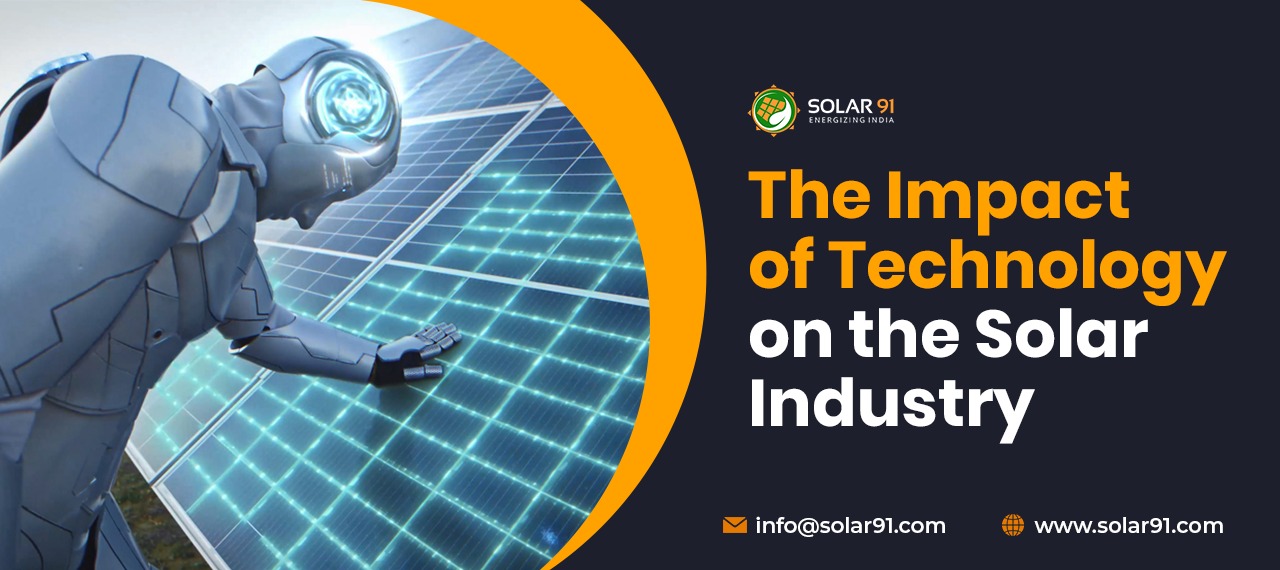Impact of Technology on the Solar Industry
Much has changed since the 1960s when solar technology was first invented and solar photovoltaics (PV) were thought to be a thing of the future. Since 2011, technological advancements have resulted in competitive pricing, reliability, and scalability have made solar energy the favoured alternative for clean energy consumption, fueling the sector’s expansion at an exponential rate.
As the world strives to establish the correct balance between energy security, economic growth, and environmental sustainability, solar power has emerged as one of the most sustainable renewable energy sources to address this issue. The solar energy sector has been a critical site of large expenditures in R&D and innovation. A number of exciting new technologies are either in the pipeline or have previously been on the market, and they are expected to have a progressive influence on the sector as it moves forward. While the solar sector’s growth observed a moderate growth from its pre-pandemic levels, research and development of improved solar power technology have remained strong. There is no shortage of ideas and new products, ranging from larger, more powerful, and more efficient solar panels.
The Internet Of Energy
The Internet of Things (IoT) is concerned with power generation and delivery. IoE is strongly related to the concept of energy decentralization – the shift toward a more sustainable power infrastructure in which energy is used in the time and place where it is created. This new energy infrastructure paradigm requires a high level of automation to manage the new technological platforms. Artificial intelligence (as discussed above) will play a significant role in this along with other emerging technological trends. This technology layer will enable solar energy firms to conduct real-time, data-driven decision-making and predictive maintenance to increase efficiency while simultaneously boosting reliability.
Advanced Renewable Engineering
Because of the great push to generate more power more economical, efficient, and safe solar technology is being developed. In 2022, engineering innovations will bring us more powerful and adaptable photovoltaic panels that are used for solar power generation. Companies in the solar industry are developing new techniques to construct photovoltaic panels that use diverse reflecting and refracting materials – including fluorescent ink – to focus light onto the solar cells, resulting in more effective energy harvest. This new innovation will give us panels that are lightweight, cheaper, and require less energy to generate electricity. New materials that transform energy more effectively are also being developed.
Development in Inverter Technologies
Inverter technologies are also evolving, with greater power ratings ranging from 500 kW to 5 MW. Inverters are rapidly developing to match the changing functions in a PV power plant. The efficiency and dependability of solar power generation from a project are mostly controlled by the qualities of the PV inverters, which are a fundamental component of a photovoltaic system. Inverters now include built-in monitors. PV inverters may now provide reactive power during the night to power highly inductive loads such as transformers in the plant. New generation inverters are more reliable and play an important part in a solar system’s cost optimization and machine intelligence.
Remote monitoring
Remote monitoring has been discovered to be critical in assessing the health of a solar PV system. Because most solar plants are placed in industrial zones and hinterlands, it is critical for the operator to have daily access to information on their operations. Suppliers of operations and maintenance (O&M) will have little knowledge of local weather conditions and the impact of terrain on plant performance. This is where remote monitoring can help. Because clients have access to remote monitoring systems, it has helped to bridge the information gap by providing continuous updates about the plant. It aids in the optimization of plant performance and the client’s sustainability objective.
BIPV Solar Technology
Construction-integrated photovoltaics (BIPV) refers to photovoltaic building materials that naturally integrate into building architecture in the form of roofs, canopies, atriums, facades, and skylight systems. It provides a sustainable and practical solution for improving the building’s energy efficiency, resulting in significant savings in electricity expenses and zero carbon footprints. Dual glass modules are widely utilised in place of traditional glass walls, producing clean energy while allowing natural light to flow inside. Rising awareness of green infrastructure and zero-emission buildings is likely to drive the solar market expansion even further.
Conclusion
As technology advances, those interested in implementing solar power will have a lot to be excited about in the future. Because of the emergence and quick development of artificial intelligence (AI), machines will become more efficient and intelligent, assisting in the acceleration of the solar industry’s growth. Today, solar developers use best-in-class technologies to conserve water during operations and maintenance, as well as highly specialized cleaning procedures. These include high-pressure cleaning instruments that utilize less water. So, if you think that technology has done it all, you are yet to encounter new innovations and new technologies in the solar industry.

